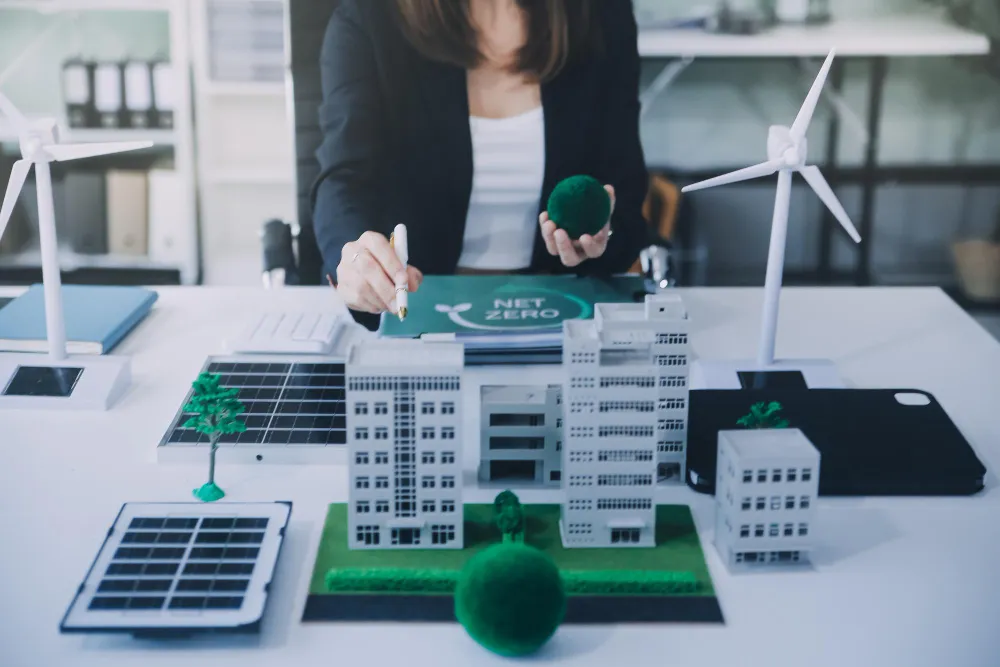Building operations account for 30% of global energy consumption and...


Human activities are one major reason behind climate change. No other species can do that. But climate change means a significant increase in CO2 levels in the atmosphere.
WIRED states that the last time there was this much carbon dioxide in the air was three million years ago. Trees grew at the South Pole, and sea levels were much higher at that time.
One simple and effective way to address this issue is energy modeling for efficiency. But does this approach really work? Continue reading to understand the significance of energy modeling!
It is an important tool for analyzing and optimizing energy consumption. Both individuals and businesses can benefit from these models.
Here, you must start by creating a virtual representation of all your energy systems. This will help determine specific factors affecting energy consumption and make estimates about this consumption under different scenarios.
As we mentioned at the start of this article, human's contribution to climate change is truly significant. This makes it important that we take the right measures to mitigate this effect with the right measures.
One of the most effective of those ways is energy modeling for green buildings. That said, here are some of the most important reasons to use this approach to your advantage:
Sustainability is definitely a significant priority in today's world. Proper energy modeling is one of the most effective ways to analyze energy consumption patterns. This will help determine potential areas for improvement, helping businesses reduce their carbon footprint.
This is the most important benefit of leveraging proper energy modeling and using it to your advantage. The more energy efficient your property is, the less energy you need to spend, further saving you more on operational costs. You can use energy modeling to determine the performance of different electrical equipment and optimize its performance.
As climate change becomes a pressing priority, more and more authorities are setting up rules and regulations. Adhering to all these rules and regulations is not always easy unless you use energy modeling to your advantage. This is important for ensuring your building meets all the relevant energy efficiency codes and standards.
Managing risks is always a concern, and this is another area where energy modeling can help. You can better assess risks related to energy consumption, such as supply disruptions or price volatility. This will help develop a proper mitigation strategy that gives you a steady and stable energy supply.

If you are trying to maximize energy efficiency modeling, it is always important that you follow the right steps. This will help you realize your energy efficiency goals much more easily and get better results for your effort. So, here are the steps you must follow to implement the right energy modeling strategy:
The first thing you need to do is collect as much energy consumption data as possible. This will help you determine special patterns and make informed choices in the following steps. You can use tactics like energy metering, audits, and other data collection methods to get the right insights.
Now that you have your hands on the right data, it is time to create a virtual representation of the energy system. This means you must create a detailed model of every energy-consuming equipment and system. This is very important for getting a better insight into the building's overall energy consumption.
With the right data models in place, it is time to analyze all that data and the relevant energy patterns. This will help you determine specific areas for improvement and make the necessary changes. This could be anything from optimizing cooling and heating solutions to managing the energy consumption of lighting fixtures.
Now coming to the main step of implementing an energy modeling strategy that is to make the necessary optimizations. You must optimize as many aspects as possible and reduce the overall cost of energy. You can change operating schedules, upgrade equipment, and even implement energy management systems to realize this goal.
Getting the most out of your energy consumption systems means constantly monitoring your building's energy use. Make it a point to analyze these results regularly to determine potential inefficiencies increasing your energy consumption. Then, you can take the right steps to optimize energy consumption over a given period of time and get better results.
You must know that there are plenty of building energy modeling benefits. But implementing this comes with certain challenges and pitfalls. Some of the most common ones include:
The role of energy models in construction and other sectors is increasing by the day. Businesses should take this seriously and reduce their energy consumption for better sustainability. The information in this blog will help you start on the right foot.
Building operations account for 30% of global energy consumption and...
As we step into 2025, New York real estate remains a dynamic and...